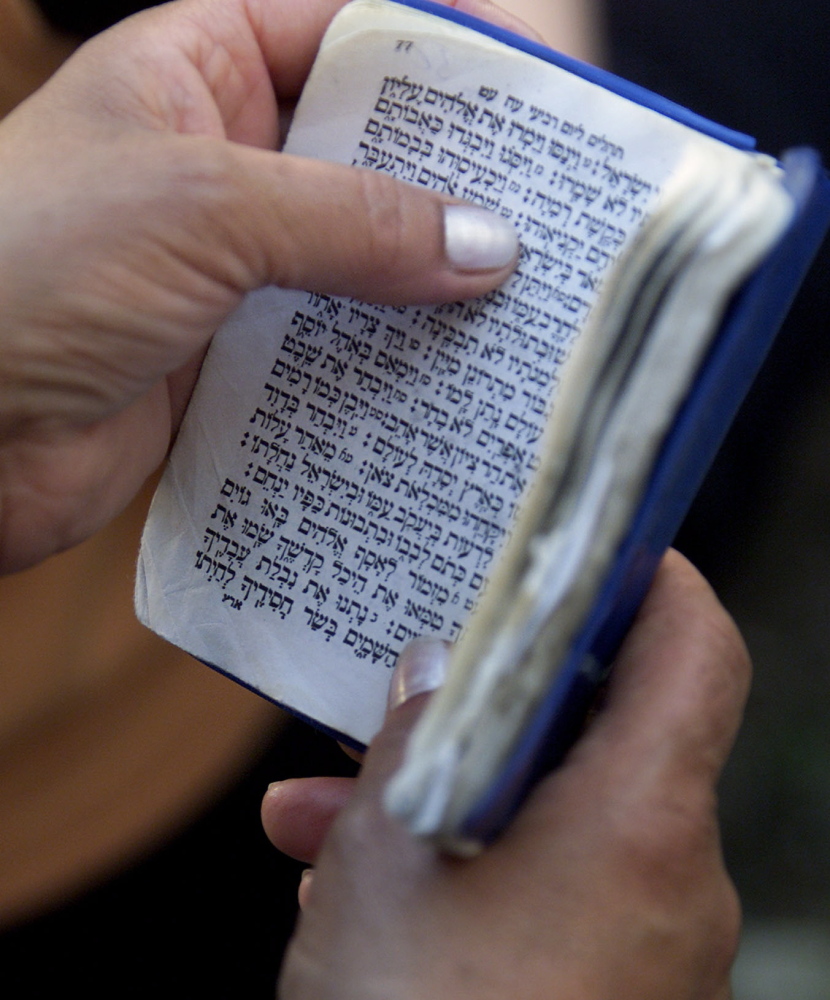Is God a majestic king on a throne with unbounded power, or a “beloved friend and partner”? A “he” or a “Holy Presence who spreads Her wings over you”? Does God even exist?
There’s a range of options on each, in a two-page spread of the new version of American Judaism’s best-selling prayer book, which was just released by the Reform Movement – the faith group’s largest denomination.
The text will be used during the fall High Holidays of Rosh Hashana and Yom Kippur, an intense liturgical period of reflection for many U.S. Jews. The book was overhauled this month for the first time in 40 years.
The new book includes gender-neutral blessings for transgendered people, changing “bride and groom” to “couples” in an effort to be LGBT-friendly and weaving Pablo Neruda, Langston Hughes and Henry David Thoreau with the Old Testament.
New passages also leave more room for doubt and questioning. Page 181 reads: “I speak these words but I don’t believe them.” Opposite, on page 180, a more traditional prayer appeal sounds more certain, referencing a creator God who is “slow to anger, quick to forgive.”
In its attempt to inspire a diverse, liberal faith community with a complicated relationship to prayer, Reform Judaism is a pioneer among liberal denominations in adapting ancient texts to engage topics that are increasingly mainstream, from gay equality and interfaith families to doubt.
Rabbi Danny Zemel, a popular rabbi at Temple Micah in Washington, said the new High Holidays text – titled Mishkan HaNefesh, or “Sanctuary of the Soul,” in Hebrew – addresses important trends in the evolution of the faith.
“What rabbis have had a long time coming to grips with is that Jews are a prime example of people who live and feel their lives to be secular. And our basic texts were written by people who took God’s existence for granted,” Zemel said. “That is the defining issue of our age.”
Most houses of worship have not addressed topics reflecting the increasing secularization of American society in their main texts, often because they disagree with those views. But some liberal faith groups are experimenting – primarily by including such views in printed supplements.
“We’re trying to see ourselves as in continuity with historic tradition, but worship is always changing because the world around us changes and people change and theological understandings shift,” said the Rev. Ruth Meyers, who chairs the liturgy and music committee for the Episcopal Church.
The Episcopal Church last updated its prayer book, the Book of Common Prayer, in the 1970s. But last year, it came out with a supplement: Daily Prayer for All Seasons, which trims a thick series of traditional daily prayers to a couple pages of prayers organized into categories with more general, contemporary names: praise, wisdom, love, forgiveness.
“This prayer book presents a variety of images of God,” the book’s introduction reads.
Rabbi Hara Person, head of the Reform movement’s publishing arm at the Central Conference of American Rabbis and the book’s executive editor, said over about seven years of discussion, test runs and edits, editors and writers tried to re-envision the concept of how Jews use prayer books .
They removed stage directions (things like “all rise” or “the congregation is seated”) and tried to make the book a personal guide that Jews can navigate as they wish, rather than a users’ manual to a service with a leader and followers.”We want people to find their own personal moment,” she said.
Jews tend to be less frequent servicegoers and to pray significantly less than Americans in general (51 percent pray less than once a week, twice the percent of Americans overall who say that), though clergy of any faith in 2015 are hustling to find ways to inspire a multitasking, noncommittal worshipper who may be browsing among religions and sick of institutional structures and events.
Send questions/comments to the editors.



Success. Please wait for the page to reload. If the page does not reload within 5 seconds, please refresh the page.
Enter your email and password to access comments.
Hi, to comment on stories you must . This profile is in addition to your subscription and website login.
Already have a commenting profile? .
Invalid username/password.
Please check your email to confirm and complete your registration.
Only subscribers are eligible to post comments. Please subscribe or login first for digital access. Here’s why.
Use the form below to reset your password. When you've submitted your account email, we will send an email with a reset code.